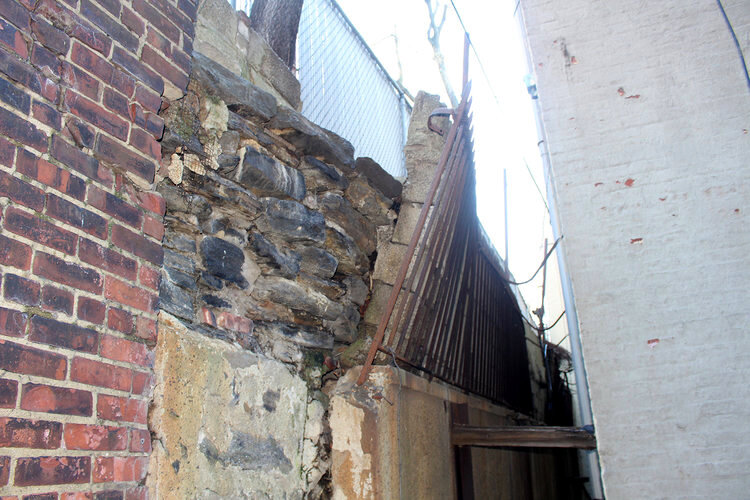Indicators on Retaining Wall Inspections You Should Know
Table of ContentsRumored Buzz on Retaining Wall InspectionsHow Retaining Wall Inspections can Save You Time, Stress, and Money.Retaining Wall Inspections Can Be Fun For EveryoneRetaining Wall Inspections for Dummies
A wall with several owners may have one report submitted for all of the owners, yet each specific owner should send their own declaring charges. 00 Late filing: $250 per month, Failure to submit: $1,000 per year, Failing to correct a harmful problem: $1,000 per month, prorated daily If an UNSAFE problem is observed during the examination, The proprietor needs to repair the wall surface and/or take proper steps to protect the safety and security of the public.
There is no condominium neighborhood property extra forgotten than its site walls. They literally end up being component of the landscape and appear to go away, yet they are crucial to the health and wellness of the community. They are sometimes called keeping wall surfaces or sometimes simply landscape structures, yet in the hilly insides of Maine or the rugged slopes of the coastline, these structures allow the really existence of some condominium areas.
They can be poured concrete, steel, or lumber. They can be concrete block or stone or block. They can be very tall or really short. Whatever they are, if they fail, they can be unsafe and costly to fix. So, a prudent premises board must set up normal inspections and also keep a log of repair services.
The Best Guide To Retaining Wall Inspections
Hefty rains or dirt frost activity can have a considerable effect on a maintaining wall surface in a short time. This can be due to the excessive dirt packing behind the wall or the weight of the wall overwhelming the dirt problems under the wall.
Weep openings are created to lower this increase in hydrostatic pressure, however weep holes can be obstructed by particles or bewildered by the quantity of water. One of the primary steps in the inspection process is to observe the conditions of the ground surfaces upslope of the keeping wall surface. Some walls have trench or other kinds of drains pipes to intercept the water while some ground surface areas are created to promptly drain water over or around the wall surface prior to it can go into the ground behind the wall surface.

If they lean forward or have indicators of protruding in any locations this can suggest excess back stress or failing in the underlying dirts. Straight cracks are normally a lot more significant than upright fractures. The first time this is noted it ought to be offered the attention of the center supervisor or your designer.
Getting The Retaining Wall Inspections To Work
Lumber wall surface elements can rot with age. Any kind of wall surface can fracture and permit plants issue to grow from either side of the wall. All roots, weeds, or other growth must be eliminated when found, as they can use substantial stress to the split and develop you could look here local weakening of the wall surface.
Missing out on wall surface rocks or blocks can likewise be an indication of extreme establishing troubles. These missing out on elements might compromise the architectural stability of the maintaining wall surface and indicate excessive soil pressures anticipating future wall bulging, bowing, or bellying either up and down or horizontally - retaining wall inspections. As the initial maintaining wall surface was made for certain loading problems, any changes in the basic closeness of the wall surface should be thought about.
This can include a highway, car park whole lot, or making use of roadway salts or deicers near the wall. It also includes any modifications to the pattern of surface area water drain such as switching from a grassy surface area to a mulched surface. One of the subtlest wall surface failures is the real visit the website activity of the incline itself.
Because of this, it is necessary to document not only the wall however the peripheral areas in the location to make certain any activity out of the average is noted and also reported. Specifically note any ground activity at the foot of the keeping wall. A visible wall surface is a secure wall.
Indicators on Retaining Wall Inspections You Should Know
The majority of readily available SRW systems are dry-cast machine-produced concrete. Traditional SRWs are categorized as either solitary deepness or numerous depth. The optimum wall elevation that can be constructed utilizing a single deepness device is directly symmetrical to its weight, width, unit-to-unit shear toughness as well as batter for any offered soil as well as website geometry conditions (retaining wall inspections).
7 MPa) for a standard of 3 systems with a minimum of 2,500 psi (17. 2 MPa) for a private unit. When greater compressive strengths are specified, the checked average net area compressive stamina of 3 units is required to equivalent or go beyond the defined compressive stamina, as well as the minimum needed solitary device toughness is: the specified compressive stamina minus 500 psi recommended you read (3.
4): fat burning of each of 5 test samplings at the conclusion of 100 cycles 1% of its first weight; or weight loss of each of four of the 5 examination specimens at the end of 150 cycles 1. 5 % of its first weight. Date of inspection: Professional: Project name: Designer: Address: Inspector: The SRW design ought to be reviewed for general conformance with relevant requirements.